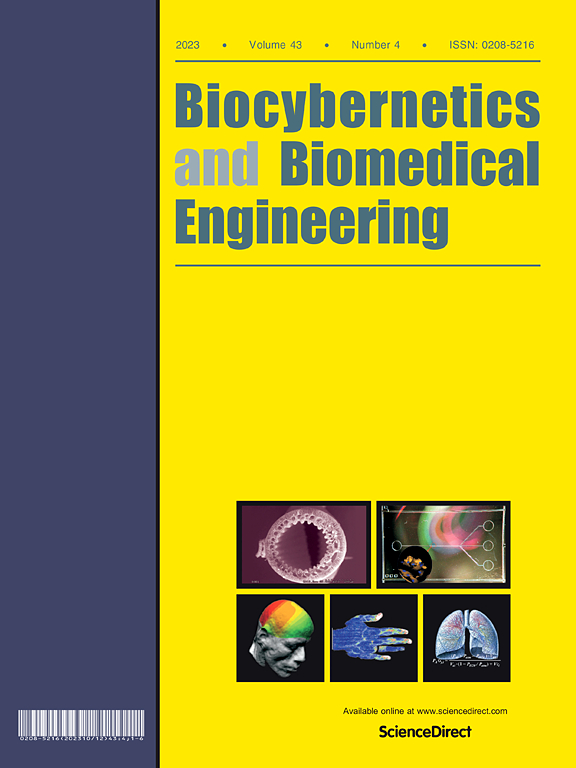The impact of tongue size on submental negative pressure treatment of airway obstruction revealed by fluid-structure interaction simulations
IF 6.6
2区 医学
Q1 ENGINEERING, BIOMEDICAL
引用次数: 0
Abstract
The continuous negative external pressure (cNEP) applied on the submental surface is a method of non-surgical treatment for obstructive sleep apnea (OSA), which can effectively widen the airway in some OSA patients. However, it cannot effectively improve airway collapse in obese patients and its mechanism remains unclear. In this study, we aim to analyze the reasons for the ineffectiveness of cNEP treatment in OSA patients with obesity. Based on magnetic resonance imaging (MRI), three-dimensional models of the head and neck were constructed for a healthy subject, an OSA patient with enlarged tongue, and an OSA patient with the tongue adjusted to normal size. By performing the one step staggered fluid–structure interaction numerical simulations, we analyzed the collapse of the airway in these three models under the influence of cNEP. Restoring the tongue to normal size in the OSA patient significantly improves the airway critical closing pressure under cNEP treatment compared to the patient with enlarged tongue. The enlargement of the tongue in the OSA patient hindered the widening of the velopharyngeal airway under the action of cNEP. The numerical results reveal that cNEP treatment can effectively widen the laryngopharyngeal airway, thus providing a potential therapeutic option for OSA patients with laryngopharyngeal obstruction. Tongue enlargement in OSA patients is a critical factor influencing the efficacy of cNEP treatment. This study reveals the reasons for cNEP treatment failure in obese patients and the potential value of cNEP targeted therapy.
流固耦合模拟揭示舌形大小对颏下负压治疗气道阻塞的影响
在颏下表面施加持续外负压(cNEP)是一种非手术治疗阻塞性睡眠呼吸暂停(OSA)的方法,它可以有效地拓宽部分OSA患者的气道。然而,它不能有效改善肥胖患者气道塌陷,其机制尚不清楚。在本研究中,我们旨在分析cNEP治疗OSA合并肥胖患者无效的原因。基于磁共振成像(MRI)技术,分别对健康受试者、舌部增大的OSA患者和舌部调整至正常大小的OSA患者建立头颈部三维模型。通过一步交错流固耦合数值模拟,分析了三种模型在cNEP作用下的气道塌陷。与舌部扩大的患者相比,将舌部恢复到正常大小的OSA患者在cNEP治疗下可显著改善气道临界闭合压力。在cNEP作用下,OSA患者舌部的扩大阻碍了腭咽气道的扩张。数值结果表明,cNEP治疗可有效拓宽喉咽气道,为OSA合并咽部梗阻患者提供了一种潜在的治疗选择。OSA患者舌肿大是影响cNEP治疗效果的关键因素。本研究揭示了肥胖患者cNEP治疗失败的原因及cNEP靶向治疗的潜在价值。
本文章由计算机程序翻译,如有差异,请以英文原文为准。
求助全文
约1分钟内获得全文
求助全文
来源期刊

Biocybernetics and Biomedical Engineering
ENGINEERING, BIOMEDICAL-
CiteScore
16.50
自引率
6.20%
发文量
77
审稿时长
38 days
期刊介绍:
Biocybernetics and Biomedical Engineering is a quarterly journal, founded in 1981, devoted to publishing the results of original, innovative and creative research investigations in the field of Biocybernetics and biomedical engineering, which bridges mathematical, physical, chemical and engineering methods and technology to analyse physiological processes in living organisms as well as to develop methods, devices and systems used in biology and medicine, mainly in medical diagnosis, monitoring systems and therapy. The Journal''s mission is to advance scientific discovery into new or improved standards of care, and promotion a wide-ranging exchange between science and its application to humans.
 求助内容:
求助内容: 应助结果提醒方式:
应助结果提醒方式:


